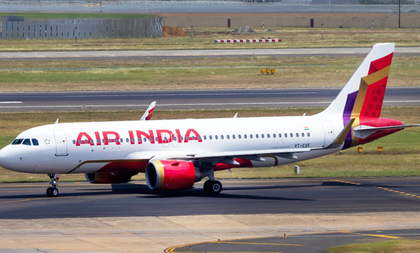Air India starts widebody retrofit, speeds up narrowbody upgrades
By IANS | Updated: August 10, 2025 17:39 IST2025-08-10T17:31:48+5:302025-08-10T17:39:56+5:30
New Delhi, Aug 10 Air India on Sunday began the retrofit of its widebody aircraft and is accelerating ...

Air India starts widebody retrofit, speeds up narrowbody upgrades
New Delhi, Aug 10 Air India on Sunday began the retrofit of its widebody aircraft and is accelerating the refurbishment of its narrowbody fleet as part of a large-scale modernisation drive worth over $400 million.
The initiative is aimed at improving passenger comfort, enhancing operational efficiency, and giving the airline’s fleet a fresh, modern look.
The retrofit programme for the widebody fleet marks a significant milestone in Air India’s transformation plan.
The airline is upgrading cabin interiors, installing new seats, improving in-flight entertainment systems, and enhancing overall design to match global standards.
The first retrofitted widebody aircraft is expected to re-enter service in the coming months.
At the same time, Air India is pushing forward with the refurbishment of its narrowbody aircraft, expediting the pace to ensure more upgraded planes enter service faster.
This includes improved seating layouts, refreshed cabin interiors, and upgraded lighting systems for a more comfortable flying experience.
Air India’s modernisation programme is part of a broader strategy to strengthen its position in both domestic and international markets.
The $400 million retrofit plan covers more than 100 aircraft and is being rolled out in phases. Once completed, the upgraded fleet is expected to significantly improve customer satisfaction and reinforce Air India’s brand as a premium carrier.
Meanwhile, last month the Directorate General of Civil Aviation (DGCA) found 51 safety lapses in Air India’s operations during its annual audit, raising fresh concerns over the airline’s compliance with mandatory aviation safety norms.
The audit revealed a range of shortcomings, including outdated training manuals, fragmented training records, lack of pilot training, unqualified simulators, untrained staff managing flight rosters, and irregularities in approvals for low-visibility operations.
Disclaimer: This post has been auto-published from an agency feed without any modifications to the text and has not been reviewed by an editor
Open in app